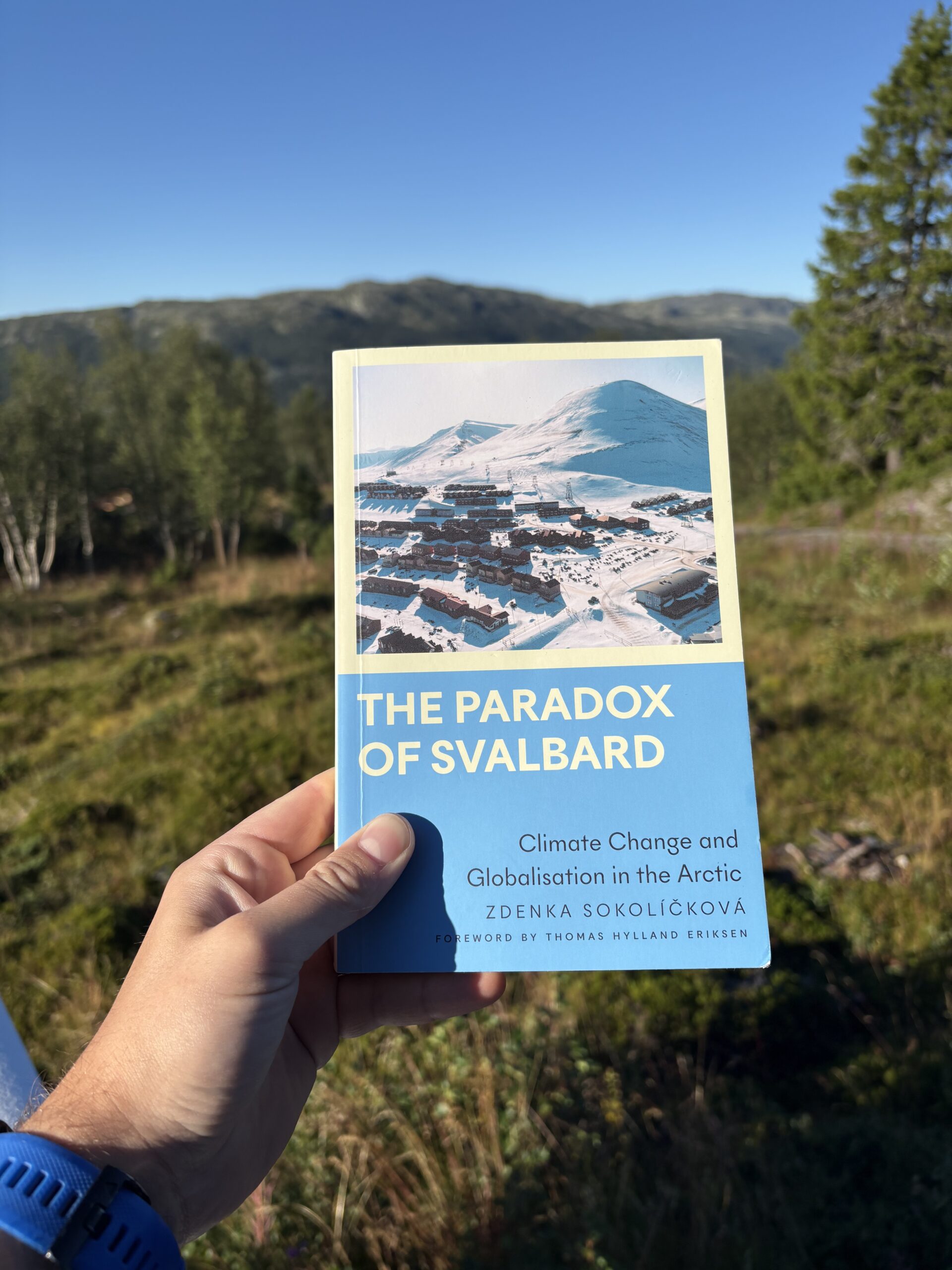After spending seven weeks on Svalbard, I thought I had a good understanding of what life was like in Longyearbyen. I’d experienced the midnight sun, navigated the rules about polar bear safety, and observed the unique dynamics of this remote Arctic community.
But it wasn’t until I read The Paradox of Svalbard by Zdenka Sokolíčková that I really gained a good understanding of the social dynamics on Svalbard, particularly in Longyearbyen.
How I Found This Book
I attended a lecture in the church in Longyearbyen by a woman who had lived on Svalbard for over 30 years. It was a fascinating insight into the rapid change that Longyearbyen had gone through over the years.
After her presentation, we started talking, and I mentioned to her that I was a sociologist, curious about the social dynamics of this unique place. Without hesitation, she recommended The Paradox of Svalbard, which was for sale right there in the church.

The Reading Experience
The opening chapters are dense, academic, and quite challenging to get through. If you’re expecting a light, anecdotal travel read, you’ll be disappointed. Sokolíčková is an anthropologist, and this book was her PhD dissertation, so the book begins with dense theoretical and methodological justification.
But if you can persevere past those first chapters, the book transforms. The later sections weave together more personal stories, revealing quotes from residents, and sharp analysis in a way that brings Longyearbyen’s hidden social dynamics into sharp focus.
What Makes Svalbard a Paradox?
The “paradox” refers to the fundamental contradiction at the heart of Svalbard’s existence. On paper, the Svalbard Treaty of 1920 grants equal rights to citizens of all signatory nations to live and work on the archipelago. In practice, however, Norway has systematically shaped Svalbard into a distinctly Norwegian territory.
Sokolíčková documents this with precision. One example that stood out was the voting rights system. To vote in local elections on Svalbard, residents must have previously lived in mainland Norway. This single rule effectively excludes a significant portion of Longyearbyen’s population who came directly from other countries, cementing Norwegian political control.
The book reveals how Norway uses administrative and cultural mechanisms to maintain sovereignty over territory that was meant to be internationally accessible.
Why This Matters for Understanding Remote Communities
What makes The Paradox of Svalbard valuable beyond its specific subject matter is how it illustrates the gap between official policy and lived reality in remote communities. The stated rules are one thing; the unwritten social codes and power structures are something else entirely.
During my seven weeks in Longyearbyen, I noticed this disconnect but couldn’t quite articulate it. The book provided the framework I was missing. Sokolíčková shows how formal institutions, informal social networks, and environmental constraints interact to create unique community dynamics that can’t be understood through official documentation (or a short visit to the place) alone.
A Risk Management Perspective: The Unequal Distribution of Risk
The book exposes the unequal distribution of risk within Longyearbyen’s community. To the sociologists, it doesn’t come as a surprise that certain groups systematically face higher risks across every dimension, from economic stability to health outcomes to physical safety.
Sokolíčková reveals how this plays out in Longyearbyen. The precariat (a portmanteau merging precarious with proletariat) of temporary workers, non-Norwegian speakers, and those without mainland connections face compounded risks that their more privileged neighbours don’t encounter.
This has practical implications for safety management on Svalbard. Not everyone speaks Norwegian, yet government communication is primarily in Norwegian. Access to healthcare varies vastly depending on your employment status and documentation. Housing is precarious, with certain groups relegated to lower-quality, less safe accommodation whilst others enjoy secure, well-maintained housing.

Then there’s the work itself. Some residents take on more dangerous jobs, such as mining, logistics, and outdoor guiding, whilst simultaneously having less power to advocate for their own safety. They’re more vulnerable, less able to refuse unsafe work, and often lack the social capital to challenge inadequate safety measures.
For policy makers working in Svalbard – or any remote, stratified community – this book is essential reading. You can’t develop risk governance strategies if you’re only designing for the privileged majority. The book forces you to confront uncomfortable questions: Whose risks are we actually managing? Who gets left behind when we implement “universal” safety measures that assume everyone has equal resources, language skills, and social power?
Technical risk assessments rarely account for these social inequalities, but they profoundly shape who stays safe and who doesn’t.
Who Should Read This Book?
Essential reading for:
- Anyone interested in the social dynamics on Svalbard beyond the postcard imagery.
- Social scientists interested in remote communities and Arctic sociology
- Risk and safety managers working in extreme or isolated environments
- Those interested in territorial politics and sovereignty questions
Not recommended for:
- Casual readers looking for light Arctic adventure stories
The Verdict
The Paradox of Svalbard offers genuine insight into the social dynamics of Spitsbergen. Sokolíčková peels back the romanticised layers of Arctic life to reveal the complex, often contradictory reality of living in Longyearbyen.
The book’s academic opening is heavy going, but persevere. It transforms into something far more engaging as personal anecdotes and quotes illuminate the author’s analysis. What makes this worthwhile is how it challenges preconceptions. If you’ve ever wondered what life is actually like in one of the world’s most remote communities – beyond the postcard imagery – this delivers those answers.
Having spent time in Longyearbyen myself, I can confirm the book’s insights match reality. Even with just seven weeks of experience, I recognised the patterns Sokolíčková describes, though I lacked the framework to understand them thoroughly at the time.
Verdict: Essential reading for anyone truly wanting to understand life in Longyearbyen.
Sign up for a new blog post every week


Leave a Reply